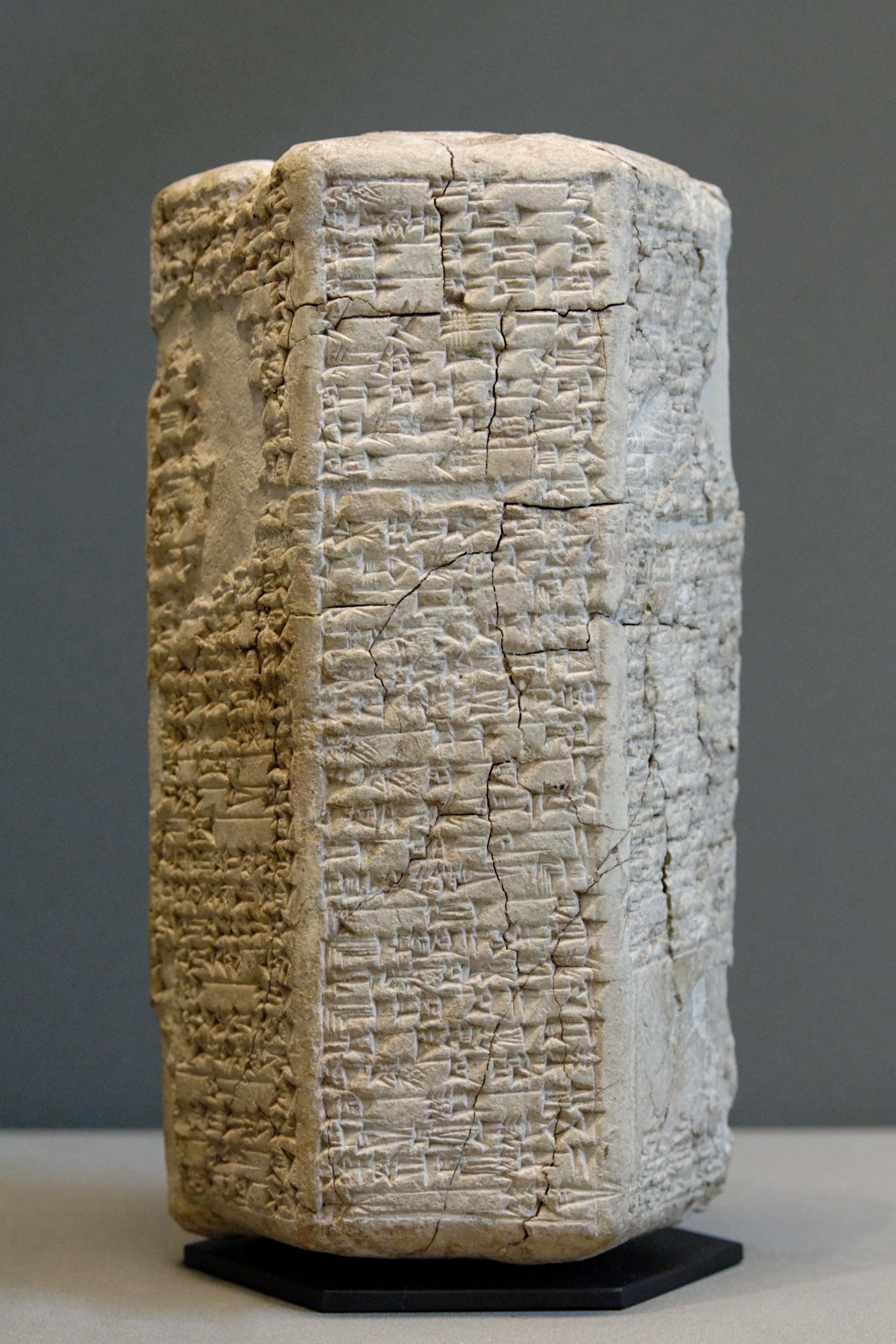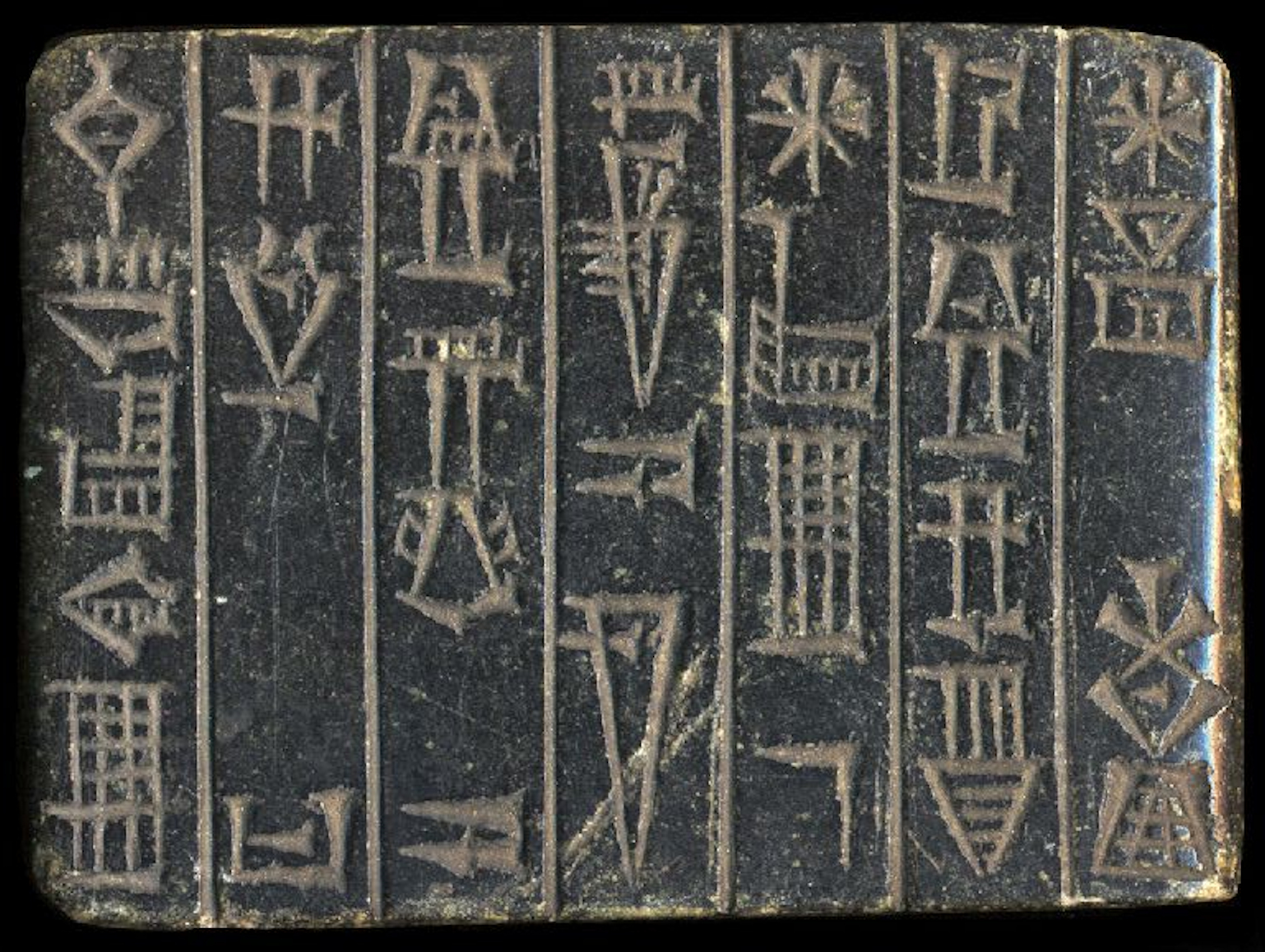|
Shu-Ilishu
Shu-Ilishu (Akkadian: ''Šu-ilišu'';Inscribed d''šu-i-li-šu''. '' fl.'' ''c.'' 1920 BC — ''c.'' 1911 BC by the short chronology, or ''c.'' 1984 BC — ''c.'' 1975 BC by the middle chronology) was the 2nd ruler of the dynasty of Isin. He reigned for 10 years (according to his extant year-names and a single copy of the ''Sumerian King List'',''Sumerian King List'', MS 1686. which differs from the 20 years recorded by others.)Such as WB 444, the Weld-Blundell prism. Shu-Ilishu was preceded by Išbi-erra. Iddin-Dagān then succeeded Shu-Ilishu. Shu-Ilishu is best known for his retrieval of the cultic idol of Nanna from the Elamites and its return to Ur. Biography Shu-Ilishu's inscriptions gave him the titles: “Mighty Man” — “King of Ur” — “God of His Nation” — “Beloved of the gods Anu, Enlil, and Nanna” — “King of the Land of Sumer and Akkad” — “Beloved of the god Enlil and the goddess Ninisina” — “Lord of his Land”, but not “King of ... [...More Info...] [...Related Items...] OR: [Wikipedia] [Google] [Baidu] |
Dynasty Of Isin
The Dynasty of Isin refers to the final ruling dynasty listed on the ''Sumerian King List'' (''SKL''). The list of the Kings Isin with the length of their reigns, also appears on a cuneiform document listing the kings of Ur and Isin, the ''List of Reigns of Kings of Ur and Isin'' (MS 1686). The dynasty was situated within the ancient city of Isin (today known as the archaeological site of Ishan al-Bahriyat). It is believed to have flourished circa 1953—1717 BCE according to the short chronology timeline of the ancient Near East. It was preceded on the ''Sumerian King List'' by the Third Dynasty of Ur. The Dynasty of Isin is often associated with the nearby and contemporary dynasty of Larsa (1961-1674 BC), and they are often regrouped for periodization purposes under the name "Isin-Larsa period". Both dynasties were succeeded by the First Babylonian Empire. History Reign of Ishbi-Erra Ishbi-Erra (''fl.'' ''c.'' 1953—1920 BCE by the short chronology) was the founder of the Dy ... [...More Info...] [...Related Items...] OR: [Wikipedia] [Google] [Baidu] |
Iddin-Dagan
Iddin-Dagan ( akk, , Di-din- Dda-gan), ''fl.'' ''c.'' 1910 BC — ''c.'' 1890 BC by the short chronology or ''c.'' 1975 BC — ''c.'' 1954 BC by the middle chronology) was the 3rd king of the dynasty of Isin. Iddin-Dagan was preceded by his father Shu-Ilishu. Išme-Dagān then succeeded Iddin-Dagan. Iddin-Dagan reigned for 21 years (according to the ''Sumerian King List''.)''Sumerian King List'' extant in 16 copies. He is best known for his participation in the sacred marriage rite and the sexually-explicit hymn that described it. Biography His titles included: “Mighty King” — “King of Isin” — “King of Ur” — “King of the Land of Sumer and Akkad.”''lugal-kala-ga'', ''lugal-i-si-in-''KI''-ga'' (''lugal-''KI''-úri-ma''), ''lugal-''KI''-en-gi-''KI''-uri-ke''4. The first year name recorded on a receipt for flour and datesTablet UM 55-21-102, University Museum, Philadelphia. reads: “Year Iddin-Dagān (was) king and (his) daughter Matum-Niatum (“the land ... [...More Info...] [...Related Items...] OR: [Wikipedia] [Google] [Baidu] |
Ishbi-Erra
Ishbi-Erra (Akkadian: d''iš-bi-ir₃-ra'') was the founder of the dynasty of Isin, reigning from ''c.'' 2017 — ''c.'' 1986 BC on the middle chronology or 1953 BC — ''c.'' 1920 BC on the short chronology. Ishbi-Erra was preceded by Ibbi-Sin of the third dynasty of Ur in ancient Lower Mesopotamia, and then succeeded by Šu-ilišu. According to the Weld-Blundell Prism,WB 444, the Weld-Blundell prism, r. 33. Išbi-erra reigned for 33 years and this is corroborated by the number of his extant year-names. While in many ways this dynasty emulated that of the preceding one, its language was Akkadian as the Sumerian language had become moribund in the latter stages of the third dynasty of Ur. Biography At the outset of his career, Ishbi-Erra was an official working for Sumerian King Ibbi-Sin, the last king of the third dynasty of Ur. Ishbi-Erra was described as a man of Mari,Tablet UM 7772. either his origin or the city for which he was assigned. His progress is recorded in let ... [...More Info...] [...Related Items...] OR: [Wikipedia] [Google] [Baidu] |
Ninisina
Ninisina (Sumerian: "Mistress of Isin") was a Mesopotamian goddess who served as the tutelary deity of the city of Isin. She was considered a healing deity. She was believed to be skilled in the medical arts, and could be described as a divine physician or midwife. As an extension of her medical role, she was also believed to be capable of expelling various demons. Her symbols included dogs, commonly associated with healing goddesses in Mesopotamia, as well as tools and garments associated with practitioners of medicine. While Ninisina was initially considered to be an unmarried and childless goddess, the god Pabilsag eventually came to be viewed as her husband. Her children were Damu and Gunura, like her considered to be healing deities, as well as Šumaḫ, who also served as her sukkal, a type of divine attendant. Further members of her court included Ninarali, a goddess associated with the underworld, harpist goddesses Ninigizibara and Ninḫinuna, and sometimes Ninshu ... [...More Info...] [...Related Items...] OR: [Wikipedia] [Google] [Baidu] |
King Of Sumer And Akkad
King of Sumer and Akkad ( Sumerian: ''lugal-ki-en-gi-ki-uri'', Akkadian: ''šar māt Šumeri u Akkadi'') was a royal title in Ancient Mesopotamia combining the titles of "King of Akkad", the ruling title held by the monarchs of the Akkadian Empire (2334–2154 BC) with the title of "King of Sumer". The title simultaneously laid a claim on the legacy and glory of the ancient empire that had been founded by Sargon of Akkad (r. 2334–2279 BC) and expressed a claim to rule the entirety of lower Mesopotamia (composed of the regions of Sumer in the south and Akkad in the north). Despite both of the titles "King of Sumer" and "King of Akkad" having been used by the Akkadian kings, the title was not introduced in its combined form until the reign of the Neo-Sumerian king Ur-Nammu ( 2112–2095 BC), who created it in an effort to unify the southern and northern parts of lower Mesopotamia under his rule. The older Akkadian kings themselves might have been against linking Sumer and Akk ... [...More Info...] [...Related Items...] OR: [Wikipedia] [Google] [Baidu] |
Isin
Isin (, modern Arabic: Ishan al-Bahriyat) is an archaeological site in Al-Qādisiyyah Governorate, Iraq. Excavations have shown that it was an important city-state in the past. History of archaeological research Ishan al-Bahriyat was visited by Stephen Herbert Langdon for a day to conduct a sounding, while he was excavating at Kish in 1924. Most of the major archaeological work at Isin was accomplished in 11 seasons between 1973 and 1989 by a team of German archaeologists led by Barthel Hrouda. However, as was the case at many sites in Iraq, research was interrupted by the Gulf War (1990-1) and the Iraq War (2003 to 2011). Since the end of excavations, extensive looting is reported to have occurred at the site. Even when the German team began their work, the site had already been heavily looted. Isin and its environment Isin is located approximately south of Nippur. It is a tell, or settlement mound, about across and with a maximum height of . History The site of Isin ... [...More Info...] [...Related Items...] OR: [Wikipedia] [Google] [Baidu] |
Sumerian King List
The ''Sumerian King List'' (abbreviated ''SKL'') or ''Chronicle of the One Monarchy'' is an ancient literary composition written in Sumerian that was likely created and redacted to legitimize the claims to power of various city-states and kingdoms in southern Mesopotamia during the late third and early second millennium BC. It does so by repetitively listing Sumerian cities, the kings that ruled there, and the lengths of their reigns. Especially in the early part of the list, these reigns often span thousands of years. In the oldest known version, dated to the Ur III period (c. 2112–2004 BC) but probably based on Akkadian source material, the ''SKL'' reflected a more linear transition of power from Kish, the first city to receive kingship, to Akkad. In later versions from the Old Babylonian period, the list consisted of a large number of cities between which kingship was transferred, reflecting a more cyclical view of how kingship came to a city, only to be inevitably repl ... [...More Info...] [...Related Items...] OR: [Wikipedia] [Google] [Baidu] |
Akkadian Language
Akkadian (, Akkadian: )John Huehnergard & Christopher Woods, "Akkadian and Eblaite", ''The Cambridge Encyclopedia of the World's Ancient Languages''. Ed. Roger D. Woodard (2004, Cambridge) Pages 218-280 is an extinct East Semitic language that was spoken in ancient Mesopotamia (Akkad, Assyria, Isin, Larsa and Babylonia) from the third millennium BC until its gradual replacement by Akkadian-influenced Old Aramaic among Mesopotamians by the 8th century BC. It is the earliest documented Semitic language. It used the cuneiform script, which was originally used to write the unrelated, and also extinct, Sumerian (which is a language isolate). Akkadian is named after the city of Akkad, a major centre of Mesopotamian civilization during the Akkadian Empire (c. 2334–2154 BC). The mutual influence between Sumerian and Akkadian had led scholars to describe the languages as a ''Sprachbund''. Akkadian proper names were first attested in Sumerian texts from around the mid 3rd-mil ... [...More Info...] [...Related Items...] OR: [Wikipedia] [Google] [Baidu] |
Ninurta
, image= Cropped Image of Carving Showing the Mesopotamian God Ninurta.png , caption= Assyrian stone relief from the temple of Ninurta at Kalhu, showing the god with his thunderbolts pursuing Anzû, who has stolen the Tablet of Destinies from Enlil's sanctuary ( Austen Henry Layard ''Monuments of Nineveh'', 2nd Series, 1853) , parents= Enlil and Ninhursag As Urash, An , deity_of=God of agriculture, hunting, and war , abode=Eshumesha temple in NippurLater Kalhu, during Assyrian times , symbol=Plow and perched bird , consort= ''As Ninurta:'' Gula''As Ninĝirsu:'' Bau , children= , planet= Saturn, Mercury , mount= Beast with the body of a lion and the tail of a scorpion , equivalent1_type = Caananite , equivalent1 = Attar , equivalent2_type = Eblaite , equivalent2 = Aštabi Ninurta ( sux, : , possible meaning "Lord fBarley"), also known as Ninĝirsu ( sux, : , meaning "Lord f Girsu"), is an ancient Mesopotamian god associated with farming, healing, ... [...More Info...] [...Related Items...] OR: [Wikipedia] [Google] [Baidu] |





.jpg)

